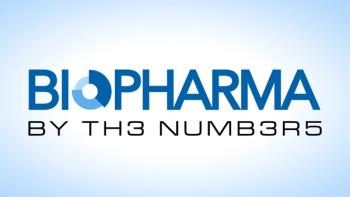Recent FDA actions, including the July 22, 2025 complete response letter (CRL) for Replimune’s RP1 (vusolimogene oderparepvec) and the July 11, 2025 CRL for Capricor Therapeutics’ CAP-1002 (deramiocel), underscore the increasing regulatory emphasis on analytical readiness, tech transfer execution, and manufacturing control in immunotherapy development (1-3). While Replimune’s denial officially emphasized clinical trial heterogeneity, underlying issues frequently involve chemistry, manufacturing, and control (CMC) maturity, manufacturing consistency, and analytical validation, even for sponsors with strong FDA engagement throughout development (4).
Key Takeaways
- Recent FDA CRLs for Replimune’s RP1 and Capricor’s CAP-1002 highlight rising regulatory focus on rigorous analytical validation, tech transfer, and manufacturing controls in immunotherapy development.
- Inadequate tech transfer, poor documentation, and failure to demonstrate process equivalency between clinical and commercial manufacturing remain frequent causes of late-stage regulatory setbacks and CRLs.
- As FDA demands detailed comparability protocols and stratified QC data for diverse patient subgroups in real-world trial designs, biopharma teams must align analytical methods and manufacturing readiness early to avoid approval delays.
Late-stage surprises
In response to Replimune’s late-stage CRL for the company’s Biologics License Application for RP1 in combination with nivolumab for the treatment of advanced melanoma, Replimune CEO Sushil Patel, PhD, said, “We are surprised by this FDA decision and disappointed for advanced melanoma patients who have limited treatment options as highlighted by the granting of breakthrough status at the time we provided the IGNYTE primary data. The issues highlighted in the CRL were not raised by the agency during the mid- and late-cycle reviews. Additionally, we had also aligned on the design of the confirmatory study. We strongly believe that RP1 in combination with nivolumab can bring substantial benefit to advanced melanoma patients” (1)
In regard to the CRL for CAP-1002, an experimental treatment for cardiomyopathy associated with Duchenne muscular dystrophy (DMD), Capricor CEO Linda Marbán, PhD, said, “While this was an unexpected decision by the FDA, we remain committed to the DMD community to get Deramiocel through the approval process. Marban also noted that the company followed FDA “guidance throughout the process,” adding that “prior to the CRL, the review had advanced without major issues, including a successful pre-licensure inspection and completion of the mid-cycle review” (2).
"Late-stage FDA rejections, even after seemingly smooth submissions and inspections, underscore that 'guidance' is not approval," said Henrick Johanning, senior VP, Quality & Strategy, Epista Life Science and editorial advisory board (EAB) member to our sister publication Pharmaceutical Technology. "Too often, analytical methods or tech transfer plans that passed early scrutiny collapse under the weight of commercial-scale expectations. The lesson is clear: CMC rigor and lifecycle planning must be treated—as I see it—as front-line regulatory strategy, not a post hoc technical detail."
“I wonder if part of the problem is that many biotechs do not have sufficient experience in-house, and rely on contract organizations,” said Pharmaceutical Technology EAB member Chris Moreton, PhD, VP, Pharmaceutical Sciences, FinnBrit Consulting, from his perspective as a consultant for various industry companies over the years. “However, the contract staff may not be sufficiently familiar with the details of the project they are working on. Thus things fall between the cracks, so to speak.”
Changes at FDA & CDC
These CRLs come amid several big changes at FDA, including an unprecedented posting on July 10 of more than 200 CRLs issued between 2020 and 2024 for drug and biologic applications that were not approved during their initial review cycle. In March, FDA’s then-acting commissioner of Food and Drugs, Peter Marks, the director of FDA’s Center for Biologics Evaluation and Research, resigned his post, pointing to an “unprecedented assault on scientific truth” that “adversely impacted public health” and the current administration’s concerns over vaccine safety in his resignation. In June, Secretary of Health and Human Services Robert F. Kennedy (RFK) Jr. announced the dismissal of all 17 members of the Advisory Committee on Immunization Practices (ACIP), a Centers for Disease Control and Prevention (CDC)-affiliated body responsible for guiding vaccine policy in the US. Then, earlier this week, RFK Jr. authorized the (newly appointed) ACIP recommendation to remove thimerosal, a mercury-based preservative, from all influenza vaccines distributed in the US, drawing mixed reactions, including from those who say the anti-vaccine community’s long-held, oft-repeated contention that there is a link between thimerosal and occurrences of autism and other neurodevelopmental disorders in children is false. The impacts of these changes on CRLs, the FDA's approval process, and the biopharma industry overall are poised to be big but remain to be fully seen.
Bar is rising for analytical and manufacturing readiness
FDA guidance and recent inspectional experience signal that biologics and advanced therapies, even under accelerated pathways, must meet high standards for analytical method validation and robust manufacturing control (4,5).
- Potency assay validation and justification of acceptance criteria, grounded in manufacturing experience and spanning all phases, are required for regulatory approval; even minor deficiencies commonly yield CRLs, including for cell and gene therapies (5).
- Mechanistic clarity (i.e., linking mode of action, product attributes, and efficacy) is a central expectation (6).
- Analytical consistency across batches is emphasized in FDA guidance and expert reviews; heterogeneity in patient responses highlights the need for comparability data that span clinical and commercial scales (4). Real-world studies confirm that even subtle assay inconsistencies may undermine approval, as highlighted in RP1 and other recent applications (1,7).
Insufficient tech transfer may undermine confidence in confirmatory trials
Tech transfer remains a major point of regulatory inspection and scrutiny, particularly for advanced therapies with which the transfer from development to commercial manufacturing introduces risk (5,6):
- Tech transfer pitfalls: Poor documentation, equipment/process parameter differences, and lack of robust comparability protocols are cited as reasons for CRLs or review delays (8).
- Guidance and industry analyses highlight that documented, risk-based tech transfer is mandatory for BLA success. FDA inspections often reveal that process changes—even small ones, such as different purification filters—without justification lead to deficiencies (4,5).
- Scale-up reproducibility and analytical bridging: FDA requires rigorous demonstration of process and analytical method equivalency as products move to commercial scale, particularly for potency, purity, and viral titer; failures here are a recurring theme in CRLs (9).
Real-world study designs demand real-world QC planning
As clinical trials become more representative of “real-world” populations, FDA expects similarly comprehensive CMC controls (5,10):
- Comparability protocols: Sponsors must establish and follow detailed protocols addressing process and assay changes, siting variability, and bridging studies (5,10).
- Stratified quality control (QC) data: Reporting QC and analytical data by demographic, disease, and treatment subgroups is required to demonstrate consistent safety and efficacy (4).
- Without robust stratified QC systems, reviewers may attribute efficacy signals to uncontrolled process drift, prompting application denials even with a persuasive clinical rationale (9).
FDA’s heightened CMC scrutiny
- Recent initiatives, such as Project Optimus, require tighter integration of CMC, analytical, and dose-response evidence early in development and before pivotal trials (10).
- Regulatory requirements now include commercial-ready tech transfer and operational manufacturing controls before study readout or data submission (4).
- Public summaries of 200+ recent CRLs highlight that manufacturing, analytical, and bioequivalence deficiencies are now the most common hurdles to approval (9).
Practical takeaways for biomanufacturing and analytical teams
- Prioritize tech transfer and comparability: Ensure methods, equipment, documentation, and batch records align across all sites and phases (5,10).
- Align assays with clinical subgroups: Analytical validation must reflect all key populations enrolled in pivotal trials (1).
- Monitor evolving guidance: Both CBER and CDER release new guidance annually, with recent updates providing detail in comparability, impurity management, and analytical bridging (10).
- Proactively audit and internally review: Firms that approach CMC, analytical validation, and tech transfer as strategic priorities reduce the risk for costly, late-stage FDA pushback.
The RP1 and CAP-1002 CRLs illustrate the critical roles that integrated, validated CMC and manufacturing disciplines play in immunotherapy development. FDA guidance,reviews, and CRL data all indicate that CMC and analytics are now as decisive as clinical data for product success.
References
1. Replimune. Replimune Receives Complete Response Letter from FDA for RP1 Biologics License Application for the Treatment of Advanced Melanoma. Press Release. July 22, 2025.
2. Capricor. Capricor Therapeutics Provides Regulatory Update on Deramiocel BLA for Duchenne Muscular Dystrophy. Press Release. July 11, 2025.
3. Levinson L. Capricor Plans for Deramiocel Resubmission After FDA Rejection. MuscularDystrophyNews.com. July 15, 2025.
4. FDA. Chemistry, Manufacturing, and Control (CMC) Information for Human Gene Therapy Investigational New Drug Applications (INDs): Guidance for Industry (accessed July 24, 2025).
5. FDA. Cellular & Gene Therapy Guidances (accessed July 24, 2025).
6. Hewitt M, Bellot L, Andersen C. Best Practice Tech Transfer Methods for CGTs. BioPharmInternational.com. November 1, 2023.
7. Bohl G. Regulatory CMC: Enhancing Biologics Development. AppliedClinicalTrials.com. September 11, 2024.
8. Chervonenko O, Gomez G. Keys to Successful Technology Transfer. BioProcessInternational.com. June 12, 2024.
9. BioAgilytix. CMC Requirements for Cell and Gene Therapy for IND Applications (accessed July 24, 2025).
10. NIH. Regulatory Knowledge Guide for Cell and Gene Therapies (accessed July 24, 2025).





